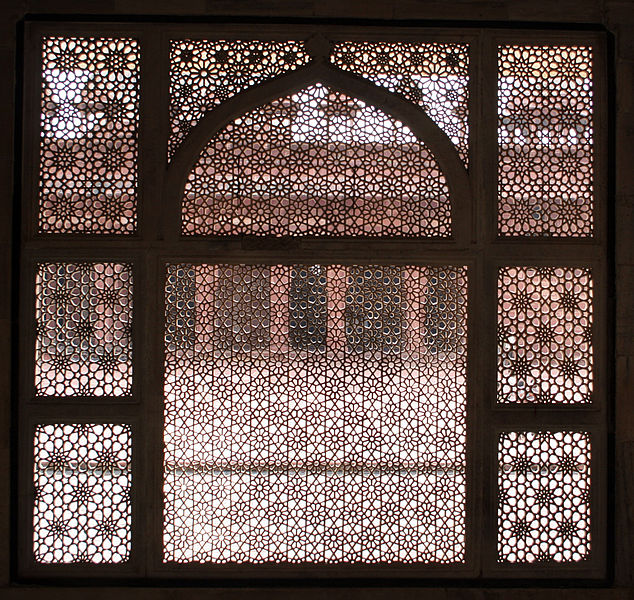Today’s blog post is the first of many to come about culture, art, and architecture of countries worldwide.
A distinctive feature of many Indian Mughal palaces and buildings is the jali or jaali screen (जाल in Hindi). A jaali screen is a perforated wooden or stone latticed screen, usually featuring an intricate ornamental pattern based on geometry and calligraphy. It is equally a part of Indian Mughal art as well as Islamic art where it is called مشربية mashrabiya. Jaali screens can both be a part of architecture, screening window and balcony openings in buildings, but also a part of monuments, like the jaali surrounding the royal cenotaphs at the Taj Mahal in Agra:
The function of the jaali is to provide protection and shade from the summer sun while allowing a draught of air to enter and cool the building. An additional benefit is privacy, since the jaali screens permit the occupants of a building to look outside without being seen from the street.



